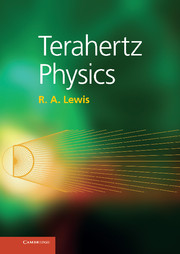Book contents
- Frontmatter
- Dedication
- Contents
- Preface
- 1 INTRODUCTION
- Part I Basics
- 2 OSCILLATIONS
- 3 COMBINING OSCILLATIONS
- 4 LIGHT
- 5 MATTER
- 6 INTERACTION OF LIGHT AND MATTER
- Part II Components
- Part III Applications
- Appendix A Prefixes
- Appendix B Mathematical symbols
- Appendix C Mathematics
- Appendix D Further reading
- Glossary
- Index
- Miscellaneous Endmatter
4 - LIGHT
from Part I - Basics
Published online by Cambridge University Press: 05 July 2013
- Frontmatter
- Dedication
- Contents
- Preface
- 1 INTRODUCTION
- Part I Basics
- 2 OSCILLATIONS
- 3 COMBINING OSCILLATIONS
- 4 LIGHT
- 5 MATTER
- 6 INTERACTION OF LIGHT AND MATTER
- Part II Components
- Part III Applications
- Appendix A Prefixes
- Appendix B Mathematical symbols
- Appendix C Mathematics
- Appendix D Further reading
- Glossary
- Index
- Miscellaneous Endmatter
Summary
This chapter calls on maths, but the maths is relatively elementary. Section 4.1 requires only the basic operations of addition, subtraction, multiplication and division. Section 4.2 requires calculus. Section 4.3 requires trigonometry, but is a rather direct extension of the methods we have already met in Chapter 2. Section 4.5 assumes some geometrical facility in picturing planes, circles and ellipses. Section 4.6 assumes a background in integration and differentiation.
Let there be light! Light is a basic physical entity. One might argue that light is the most fundamental physical phenomenon of all.
Physics is about energy and matter and their interaction. This chapter is about energy in its purest form, energy in the form of light. Chapter 5 is about matter. Chapter 6 is about the interaction between light and matter. These three chapters constitute the physics core of the book.
We start with the photon (Section 4.1). A photon is a bunch, a packet, a particle of light. We will look at what it means to describe light in this way.
An alternative way to think about light is to think of it as a wave. Maxwell's equations lead inexorably to the conclusion that light is an electromagnetic wave (Section 4.2).
Waves are a generalisation of oscillations. Oscillations involve only one variable, time. Waves add to this an additional variable, displacement. So waves can be described mathematically by extending the ideas of Chapter 2 in a straightforward manner.
- Type
- Chapter
- Information
- Terahertz Physics , pp. 54 - 73Publisher: Cambridge University PressPrint publication year: 2013
- 1
- Cited by

